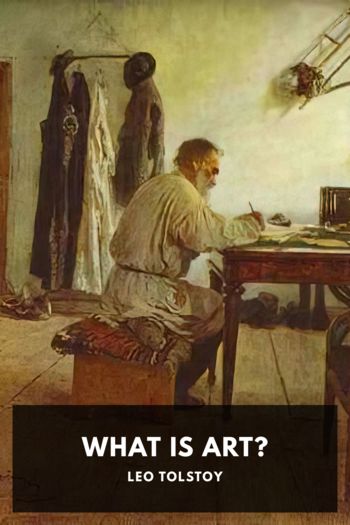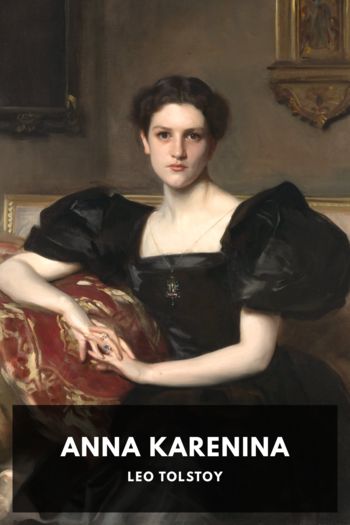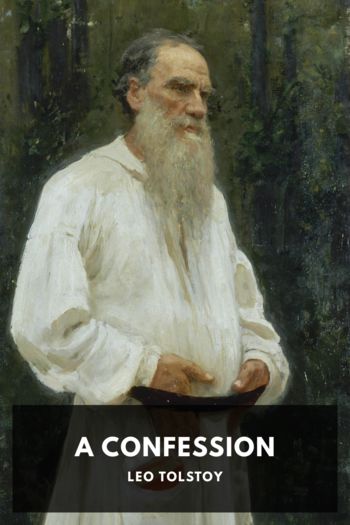What Is Art? by Leo Tolstoy (english readers .txt) 📕

- Author: Leo Tolstoy
Book online «What Is Art? by Leo Tolstoy (english readers .txt) 📕». Author Leo Tolstoy
When fifty years had elapsed after Pushkin’s death, and, simultaneously, the cheap edition of his works began to circulate among the people and a monument was erected to him in Moscow, I received more than a dozen letters from different peasants asking why Pushkin was raised to such dignity? And only the other day a literate88 man from Saratoff called on me who had evidently gone out of his mind over this very question. He was on his way to Moscow to expose the clergy for having taken part in raising a “monament” to Mr. Pushkin.
Indeed one need only imagine to oneself what the state of mind of such a man of the people must be when he learns, from such rumours and newspapers as reach him, that the clergy, the Government officials, and all the best people in Russia are triumphantly unveiling a statue to a great man, the benefactor, the pride of Russia—Pushkin, of whom till then he had never heard. From all sides he reads or hears about this, and he naturally supposes that if such honours are rendered to anyone, then without doubt he must have done something extraordinary—either some feat of strength or of goodness. He tries to learn who Pushkin was, and having discovered that Pushkin was neither a hero nor a general, but was a private person and a writer, he comes to the conclusion that Pushkin must have been a holy man and a teacher of goodness, and he hastens to read or to hear his life and works. But what must be his perplexity when he learns that Pushkin was a man of more than easy morals, who was killed in a duel, i.e. when attempting to murder another man, and that all his service consisted in writing verses about love, which were often very indecent.
That a hero, or Alexander the Great, or Genghis Khan, or Napoleon were great, he understands, because any one of them could have crushed him and a thousand like him; that Buddha, Socrates, and Christ were great he also understands, for he knows and feels that he and all men should be such as they were; but why a man should be great because he wrote verses about the love of women he cannot make out.
A similar perplexity must trouble the brain of a Breton or Norman peasant who hears that a monument, “une statue” (as to the Madonna), is being erected to Baudelaire, and reads, or is told, what the contents of his Fleurs du Mal are; or, more amazing still, to Verlaine, when he learns the story of that man’s wretched, vicious life, and reads his verses. And what confusion it must cause in the brains of peasants when they learn that some Patti or Taglioni is paid £10,000 for a season, or that a painter gets as much for a picture, or that authors of novels describing love-scenes have received even more than that.
And it is the same with children. I remember how I passed through this stage of amazement and stupefaction, and only reconciled myself to this exaltation of artists to the level of heroes and saints by lowering in my own estimation the importance of moral excellence, and by attributing a false, unnatural meaning to works of art. And a similar confusion must occur in the soul of each child and each man of the people when he learns of the strange honours and rewards that are lavished on artists. This is the third consequence of the false relation in which our society stands towards art.
The fourth consequence is that people of the upper classes, more and more frequently encountering the contradictions between beauty and goodness, put the ideal of beauty first, thus freeing themselves from the demands of morality. These people, reversing the roles, instead of admitting, as is really the case, that the art they serve is an antiquated affair, allege that morality is an antiquated affair, which can have no importance for people situated on that high plane of development on which they opine that they are situated.
This result of the false relation to art showed itself in our society long ago; but recently, with its prophet Nietzsche and his adherents, and with the decadents and certain English aesthetes who coincide with him, it is being expressed with especial impudence. The decadents, and aesthetes of the type at one time represented by Oscar Wilde, select as a theme for their productions the denial of morality and the laudation of vice.
This art has partly generated, and partly coincides with, a similar philosophic theory. I recently received from America a book entitled “The Survival of the Fittest: Philosophy of Power, 1896, by Ragnar Redbeard, Chicago.” The substance of this book, as it is expressed in the editor’s preface, is that to measure “right” by the false philosophy of the Hebrew prophets and “weepful” Messiahs is madness. Right is not the offspring of doctrine but of power. All laws, commandments, or doctrines as to not doing to another what you do not wish done to you, have no inherent authority whatever, but receive it only from the club, the gallows, and the sword. A man truly free is under no obligation to obey any injunction, human or divine. Obedience is the sign of the degenerate. Disobedience is the stamp of the hero. Men should not be bound by moral rules invented by their foes. The whole world is a slippery battlefield. Ideal justice demands that the vanquished should be exploited, emasculated, and scorned. The free and brave may seize the world. And, therefore, there should be eternal war for life, for land, for love, for women, for power, and for gold. (Something similar was said a few years ago by the celebrated and refined academician, Vogüé.) The earth and its treasures is “booty for the bold.”
The author has evidently





Comments (0)